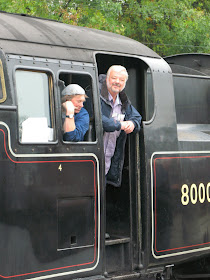 G-CPET vacates Manchester's runway 23R after arriving from Heathrow on 30th October, engines in idle reverse
G-CPET vacates Manchester's runway 23R after arriving from Heathrow on 30th October, engines in idle reverseHere is the final timetable for G-CPET with BA, 30th October 2010:
BA1384 Heathrow to Manchester departing 0745 arriving 0840
BA1389 Manchester to Heathrow departing 1000 arriving 1105
BA1482 Heathrow to Glasgow departing 1215 arriving 1340
BA1487 Glasgow to Heathrow departing at 1425 and arriving at 1545
BA1454 Heathrow to Edinburgh departing 1725 arriving 1850
BA1463 Edinburgh to Heathrow departing 1935 arriving 2100
Crikey, makes me feel old. I still think of the 757 as one of the 'newer' airliners. It's far and away the best looking airliner around today, not difficult among such ugly ducks as the 777 and A380. Only the A340 and 744 still have style!
I won't miss those wake vortices, however! Or rather, I'll endeavour to carry on missing them when positioning behind a 757 on final (757s generate vortices far in excess of what one would expect for the weight of aircraft).
There will be an Ian Allen 'Spotter's Special' from Heathrow on 6th November, which if Air Traffic permits, will include a low pass at Manchester in recognition of the type's long association with the Manchester / Heathrow shuttle.
Update 6/11/10: 'Spotter's Special' did not run - it was cancelled through lack of take-up of tickets.



































